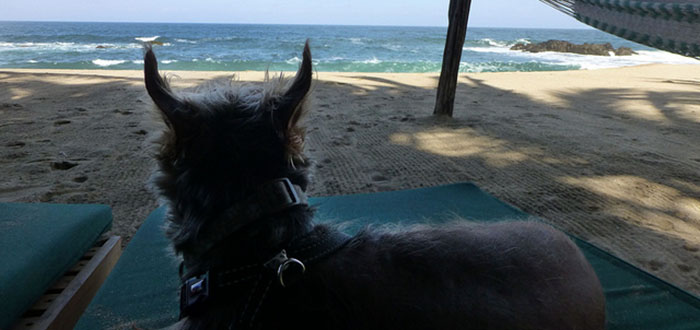Of our travels so far, Mexico has been the absolute simplest place in terms of pet paperwork and requirements:
For dogs arriving from the US, a vet will need to fill out a one-sheet health certificate on the vet’s letterhead stating that your dog is healthy and up-to-date on its rabies vaccine. The health certificate needs to be filled out within 10 days of travel and must contain the vet’s accreditation number (so make sure you choose a vet that is USDA-accredited). Details on the information to include on your form can be found here—but your vet will likely have this info on hand if they are USDA-accredited.
The vet will also need to sign (in blue) a copy of your rabies certificate. These are the two items that the Mexican officials will want to look at once you arrive.
As of this writing, Mexico does recognize the three-year rabies vaccine.
Taa-daa. That’s it! No USDA stamping or pre-arrival clearances. What a breath of fresh air.
Once you arrive, the process is as simple as the paperwork: you may notice a table that says “Pet Inspection.” You’ll need to stop here for the local vet to look at your paperwork and visually inspect your dog. Then you’ll be given two certificates saying your dog passed inspection. One is for you to keep and the other is for you to give to the customs official by the door.
If you’re flying into Puerto Vallarta, they’ll pass all your things through a scanner. As usual, go ahead and take your dog out of his or her case and pass the case through the scanner. Your dog does not ever need to go through the scanner.
FINAL NOTES: Keep in mind that the requirements for the Mexican customs officials may be different than the requirements for your chosen airline. Before booking a ticket, check in with your airline about any requirements they have for health certificates, as well as fees or pet restrictions.
Also, my vet recommends that you always double-check the requirements before your trip, as Mexico tends to change their regulations often. He says it’s better to be safe than sorry and he usually gives clients multiple forms (I had three different import forms, two of which I suppose are old requirements, though I only had to use the one and had no trouble at all with customs) just in case.
Finally, keep in mind that this is based on my own experience and is subject to change. This should not be taken as official or legal advice.
Did this post help you? Share the love by:
:: Buying a copy of my Italy, France, Switzerland, Paris, Barcelona, or Prague guides (already have one? Gift another to a friend!)
:: Clicking here before you make your next Amazon order (it doesn’t matter what you order, if you start by clicking from my site, I’ll get a commission!)
:: Donating to keep this site going.

3 comments
Great tips for canine companions. I’d only add that the human needs to be aware if the dog can’t travel in the passenger space and has to go below in the cargo area, most airlines will restrict your travel to early morning flights – when the plane and atmosphere are coolest. Some airlines refuse to fly pets during the summer months (pet health concerns) so just be aware and plan accordingly.
All excellent points.
Thanks for your helpful tips!